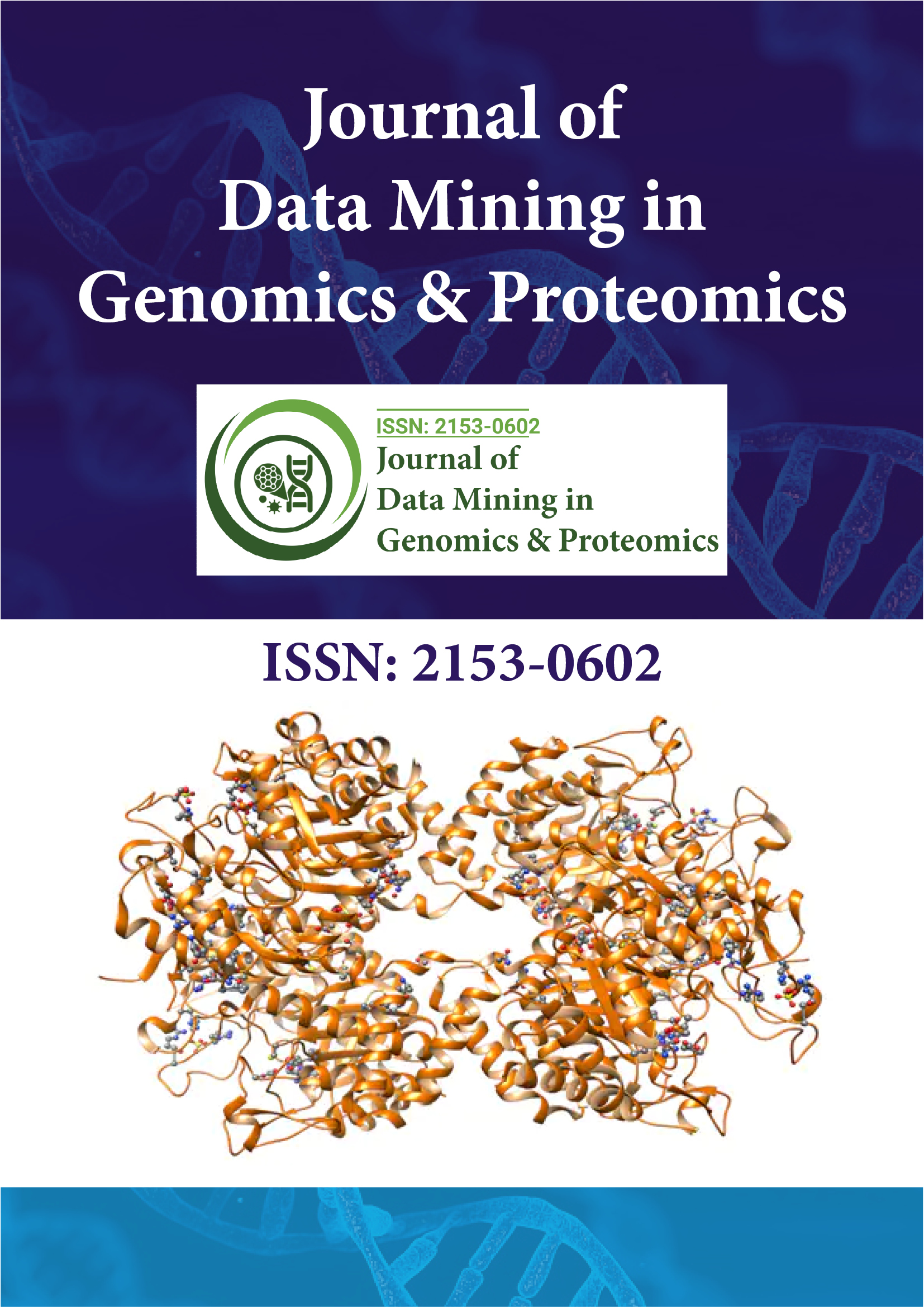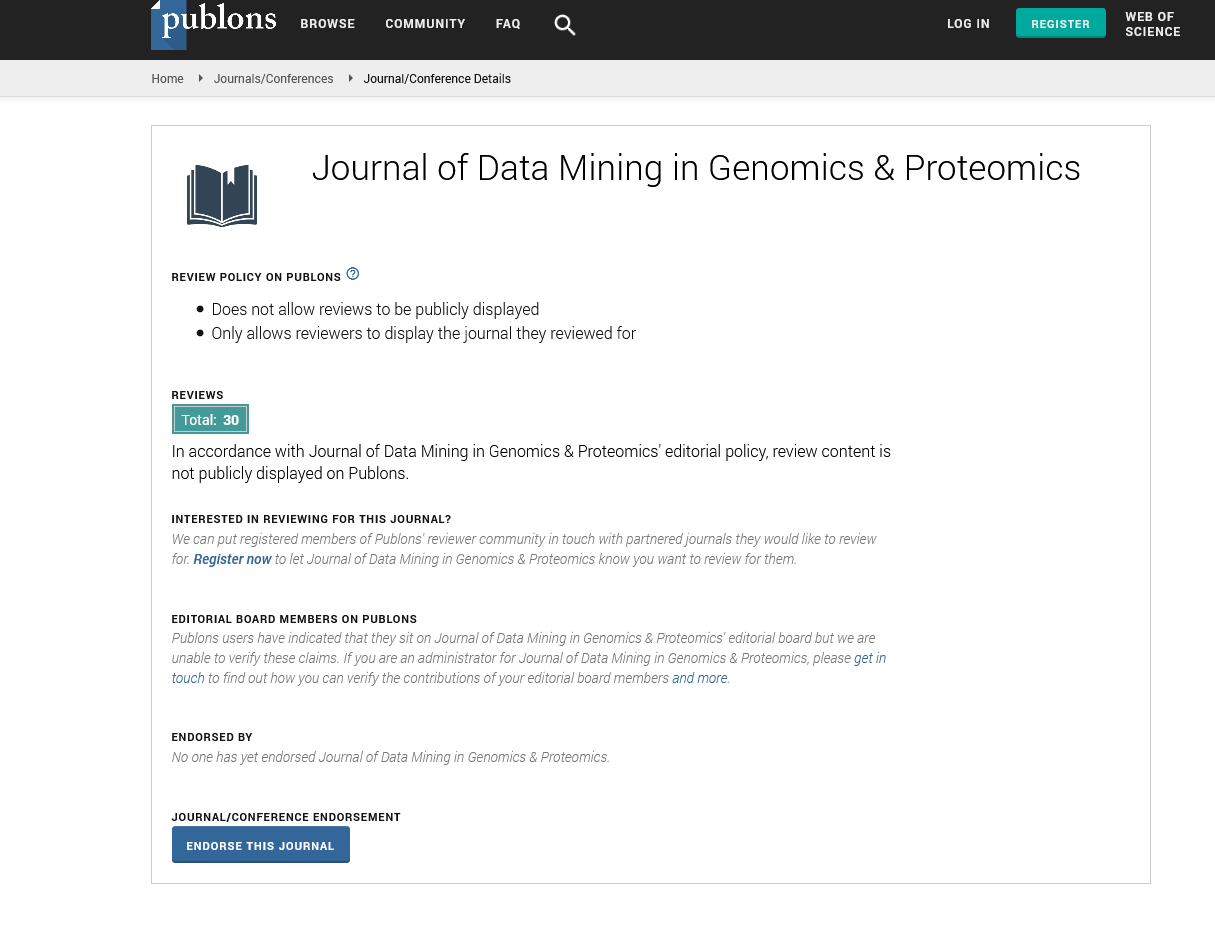PMC/PubMed Indexed Articles
Indexed In
- Academic Journals Database
- Open J Gate
- Genamics JournalSeek
- JournalTOCs
- ResearchBible
- Ulrich's Periodicals Directory
- Electronic Journals Library
- RefSeek
- Hamdard University
- EBSCO A-Z
- OCLC- WorldCat
- Scholarsteer
- SWB online catalog
- Virtual Library of Biology (vifabio)
- Publons
- MIAR
- Geneva Foundation for Medical Education and Research
- Euro Pub
- Google Scholar
Useful Links
Share This Page
Journal Flyer

Open Access Journals
- Agri and Aquaculture
- Biochemistry
- Bioinformatics & Systems Biology
- Business & Management
- Chemistry
- Clinical Sciences
- Engineering
- Food & Nutrition
- General Science
- Genetics & Molecular Biology
- Immunology & Microbiology
- Medical Sciences
- Neuroscience & Psychology
- Nursing & Health Care
- Pharmaceutical Sciences
Commentary - (2022) Volume 13, Issue 3
High Prevalence of Gene Mapping in Day-to-Day Life
Kenneth Tola*Received: 02-May-2022, Manuscript No. JDMGP-22-17231; Editor assigned: 04-May-2022, Pre QC No. JDMGP-22-17231 (PQ); Reviewed: 18-May-2022, QC No. JDMGP-22-17231; Revised: 25-May-2022, Manuscript No. JDMGP-22-17231 (R); Published: 02-Jun-2022, DOI: 10.4172/ 2153-0602.22.13.255
Description
Gene mapping refers to the techniques used to determine the location of a gene and the distances between genes. The goal of all genome mapping is to place a collection of molecular markers on the genome at their respective positions. Molecular markers come in a variety of shapes and sizes. In the construction of genome maps, genes can be viewed as a special type of genetic marker and mapped in the same way as any other marker.
Researchers start a genetic map by collecting blood, saliva, or tissue samples from family members who have a prominent disease or trait and family members who do not. Saliva is the most commonly used sample in gene mapping, particularly in personal genomic tests. Scientists then isolate DNA from the samples and closely examine it, looking for unique patterns in the DNA of family members who do carry the disease that those who do not have. These distinct molecular patterns in DNA are known as polymorphisms or markers.
The development of genetic markers and a mapping population are the first steps in creating a genetic map. The closer two markers are on the chromosome; the more likely they will be passed down to the next generation. As a result, all markers' "cosegregation" patterns can be used to reconstruct their order. Keeping this in mind, the genotypes of each genetic marker are recorded for both parents and each subsequent generation. The number of genetic markers on the map and the size of the mapping population have a large impact on the quality of the genetic maps. The two factors are linked because a larger mapping population can increase the "resolution" of the map and keep it from becoming "saturated".
Any sequence feature that can be distinguished from the two parents can be used as a genetic marker in gene mapping. In this context, genes are represented by "traits" that can be distinguished between two parents. Their linkage to other genetic markers is calculated as if they were common markers, and the actual gene loci are then bracketed in a region between the two nearest neighbouring markers. The process is then repeated by looking at additional markers that target that region in order to map the gene neighborhood to a higher resolution until a specific causative locus can be identified. This method is known as "positional cloning," and it is widely used in the study of plant species. Maize is one plant species in particular that uses positional cloning. The major advantage of genetic mapping is that it can determine the relative position of genes solely based on their phenotypic effect.
Genetic mapping is a method of determining which chromosome contains which gene and where that gene is located on that chromosome. Mapping can also be used to predict which gene is most likely to recombine based on the distance between two genes. The distance between two genes is measured in centimorgans or map units, which are interchangeable. A centimorgan is the distance between genes for which one meiotic product in a hundred is recombinant. The greater the distance between two genes, the more likely they will recombine. If it was closer, the opposite would happen.
Citation: Tola K (2022) High Prevalence of Gene Mapping in Day to Day Life. J Data Mining Genomics Proteomics. 13:255.
Copyright: © 2022 Tola K. This is an open-access article distributed under the terms of the Creative Commons Attribution License, which permits unrestricted use, distribution, and reproduction in any medium, provided the original author and source are credited.

